Table of contents
- Ducati’s strategy for the 2016 MotoGP season Advantage through tactics
- Problems on narrow stretches
- Stoner at Ducati test driver and brand ambassador
- Focus on further development of the Desmosedici
- Magneti Marelli has been a partner of the Ducati factory for years
- Interview Gigi Dall’Igna (Ducati Corse)
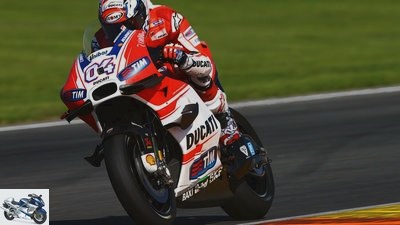
Kirn
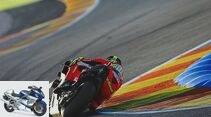
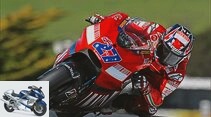
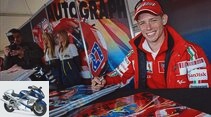
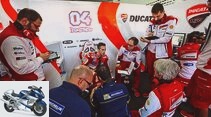
8th pictures
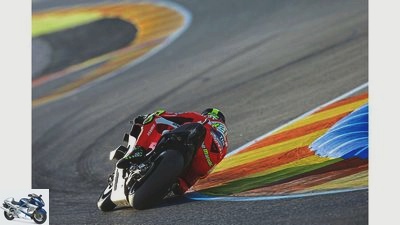
2snap
1/8
For two years the Ducati racing department has been working to catch up with the apparently superior Japanese motorcycle manufacturers in the MotoGP World Championship. There are many indications that the breakthrough could be achieved in 2016 – because race director Luigi Dall’Igna is a clever supplier of ideas as a technician and tactician.
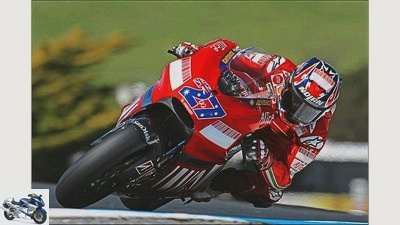
2snap
2/8
Ducati wants to build on the success of Casey Stoner, the …
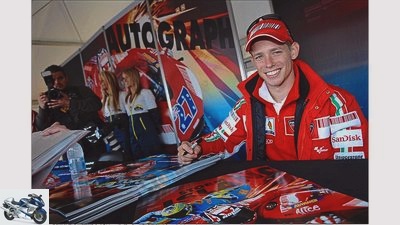
2snap
3/8
… 2007 became the first and only world champion on Ducati. In 2016 he returned to the Reds as a test driver.
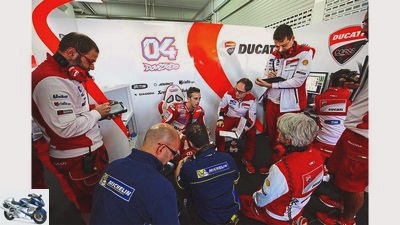
2snap
4/8
… Ducati works riders Andrea Dovizioso and Andrea Iannone, although Dovizioso is considered a late brake, while Iannone likes to accelerate out of the curve early.
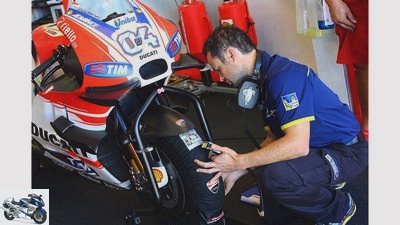
2snap
5/8
Switching from Bridgestone to Michelin tires helps …
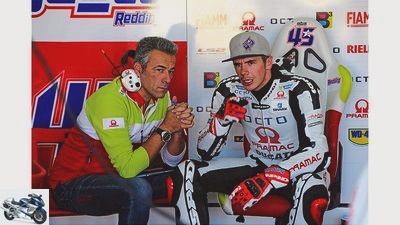
2snap
6/8
Scott Redding, 2016 Ducati newcomer to the Pramac satellite team, was able to …
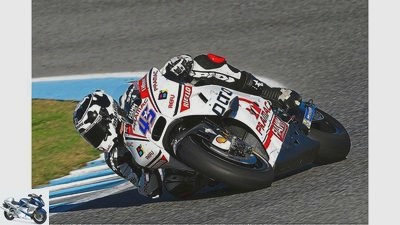
2snap
7/8
… even beat Marc Marquez in the Jerez Tests.
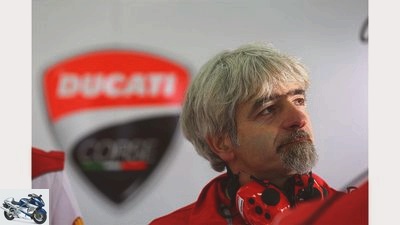
2snap
8/8
Ducati Corse Director Gigi Dall’Igna points the way: “Just being good in some races is not enough.” So we are rightly looking forward to the 2016 MotoGP season.
counselor
technology & future
Ducati’s strategy for the 2016 MotoGP season
Ducati’s strategy for the 2016 MotoGP season
Advantage through tactics
The Ducati racing department has been working for two years to catch up with the apparently superior Japanese motorcycle manufacturers in MotoGP. There are many indications that the breakthrough could be achieved in 2016 – because race director Luigi Dall’Igna is a clever supplier of ideas as a technician and tactician.
Friedemann Kirn
07/01/2016
It seemed beyond 250 km / h Ducati Desmosedici just really get started. From the last left bend on the Australian Phillip Island circuit, the fastest target curve of all GP courses, Andrea Iannone accelerated more vehemently than any other driver in the MotoGP class. On the home straight he was clearly the fastest and overtook his opponents at will, which made the hearts of the fans of the traditional factory from Bologna beat faster. “The picture of the year for all Ducatisti,” enthused Ducati Corse Director Gigi Dall’Igna. There is pride in his voice, because it was the powerful desmodromic engine that made these scenes possible.
Buy complete article

Ducati’s strategy for the 2016 MotoGP season
Advantage through tactics
4 pages) as PDF
€ 2.00
Buy now
Since Dall’Igna switched from Aprilia to Ducati at the end of 2013, he has been increasing the performance of the engine, accepting major damage, analyzing and repairing it, only to put even more load and even more speed on the engines in the next lap. In the meantime, the Ducati engine has long since stopped at 240 or 250, but rather at 260 hp and is best in class in terms of both peak performance and pulling power.
Problems on narrow stretches
The Ducati factory riders Andrea Dovizioso and Andrea Iannone struggled to bring all the power to the ground on many narrower tracks. But on Phillip Island, especially in this very special full-throttle target curve, Iannone was able to fully exploit the Ducati power. In the end, he defeated Valentino Rossi and took third place.
Now the Ducatisti are dreaming that things will get much better soon and that victories could even be on the program. Especially on Phillip Island. Casey Stoner, who brought Ducati the first and so far only MotoGP title in 2007 and who won six times in a row on the picturesque island circuit, is returning to the Italians five years after leaving Ducati.
Stoner at Ducati test driver and brand ambassador
After he left the full-time Grand Prix business at the end of 2012, Stoner was most recently under contract as a Honda test driver. But the relationship with the local racing boss Shuhei Nakamoto cooled off when Stoner turned down in April 2015 with the suggestion to replace the injured Dani Pedrosa. The relationship then landed on the freezing point after the eight-hour race in Suzuka, where Stoner fell due to a stuck throttle grip and suffered shoulder and leg injuries, but Honda was hesitant to come out with the truth about the cause of the fall.
Now Stoner is a test driver and brand ambassador for Ducati. In the old year there was a factory visit where the seat and tank position were tailored to him. Before the official MotoGP tests in Malaysia at the beginning of February, he should hit the track in Sepang, get the feeling for the Ducati and provide the engineers with initial information. “My time at Honda was a wonderful journey, with the 2011 World Championship as the highlight. But I also associate unforgettable experiences and memories with Ducati. With Ducati, I experienced the crucial part of my career. I’m happy to be back there, ”said Stoner, and of course his signing sparked a storm of speculation that the Australian will use 2016 to warm up to tests and some wild card runs and then make a real Grand Prix comeback in 2017 admit.
Focus on further development of the Desmosedici
But as nice as the speculations are, there is currently nothing but denials. Ducati waves it aside, they don’t even want to commit to the possibility of occasional races there. Stoner himself, who as a test rider will earn more than the majority of MotoGP riders, has already made it clear that he has no intention of exposing himself to the stress of a whole World Championship season again. “I’ll do everything I can to support Iannone and Dovizioso,” says the 30-year-old instead.
Initially, it’s actually all about the further development of the Desmosedici, in which Dall’Igna made a big step forward at the start of the 2015 season and provided the two works riders with a slimmer, more compact bike, whose shorter wheelbase and modified weight distribution were a basic problem of all previous models eliminated: the understeer in the corners. The Desmosedici GP15 suddenly turned onto a curve line and stayed there, whereupon Andrea Dovizioso was able to take three podiums in the first three races. But then problems caught up with him: the motorcycle was not stable enough for the late brake when turning into a curve, there was no traction at the rear, especially on high lean angles. Team mate Andrea Iannone, who is looking for his advantage when accelerating at the exit of a corner, was stronger in the second half of the season.
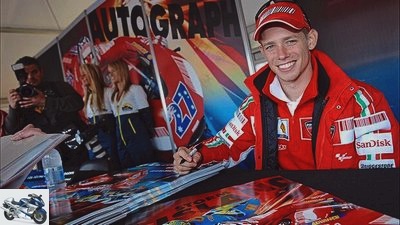
2snap
Starting in 2016 as a test driver for Ducati: Casey Stoner.
The move from Bridgestone to Michelin from next season will help both drivers. The fact that the Michelin front tire has less grip than Bridgestone’s and that the drivers are no longer able to brake to the apex of the corner masks some of the stability problems. The superior Michelin grip on the rear wheel helps both, Dovizioso, who now feels more comfortable in a full lean position, and Iannone, who can convert the easily controllable forces of the engine, which are already beginning to use in the lower speed range, into optimal propulsion.
How well the Ducati works with Michelin tires was shown by the last tests of the old season in Jerez, in which Ducati newcomer Scott Redding set the fastest time ahead of Marc Márquez. Afterwards, Dall’Igna and the other Ducati engineers went back to the factory in order to use the data collected over the two-month test break to design the Desmosedici GP16, which is no longer designed from scratch, but with careful detailed work on the new tires and the new unit electronics is adapted.
Magneti Marelli has been a partner of the Ducati factory for years
Dall’Igna also cleverly directs the engine management area. Magneti Marelli has been a partner of the Ducati factory for years, which tried to exert massive influence on the development of standard electronics and was even able to inject its own software there at the beginning of 2014. After protests by several teams, this was reversed. But even so, the Ducati engineers understand better than the Japanese competition how to use the new electronics most efficiently. Because they also benefit from the close networking with the Avintia satellite team, which had to use the standard software throughout 2015 for the entire season.
Scott Redding is accordingly relieved, who immediately found confidence in Ducati Desmosedici after a difficult year on the Honda factory machine, even if he had to be satisfied with a previous version of the current machine during the tests. “I almost slipped in the last corner because I overdid it with the front tire. But the bike spoke to me, I was able to avoid the fall, ”explained the Englishman.
The Honda didn’t speak to him, and she still speaks little to Marc Márquez, who was thrown by a highsider without warning on the first day of testing in Jerez, even though he held the throttle but didn’t open it. The low front wheel grip when turning, the still aggressive engine when accelerating and the lack of understanding of the new standard electronics add up to a huge work package for the 2016 pre-season tests at Honda. Ducati is currently one step ahead in the race for the future.
Interview Gigi Dall’Igna (Ducati Corse)
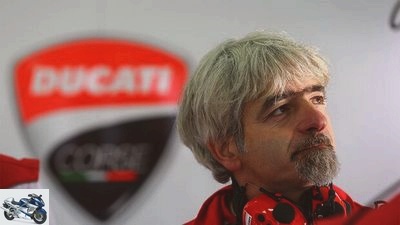
2snap
Gigi Dall’Igna, Ducati Corse Director.
Ducati poached Gigi Dall’Igna from competitor Aprilia – as a savior in dire need. The move has already paid off, Ducati drivers are back on the MotoGP podium. How does he assess the chances for the 2016 season?
MOTORCYCLE: The Ducati riders were pleasantly surprised by the Michelin tires. An important step in the preparation for the 2016 season?
Gigi Dall’Igna: We adjusted the bikes to the new tires and I can say that both riders were happy with what we achieved. Of course there are still little things that we have to improve further, but the first step was positive. The tests in Valencia and Jerez were particularly important to us because it is from these test data that we will define what the geometry and other characteristics of the Desmosedici GP16 will be like, which will debut in Sepang in early February.
MOTORCYCLE: Are the different versions of the Desmosedici so similar that the riders of the satellite teams can also contribute to the development of the new MotoGP machine??
Gigi Dall’Igna: The chassis that Avintia driver Hector Barberá uses is too different from the one we use in the internal team to be able to compare development steps directly. It is different with the Pramac team, because the chassis of the official Desmosedici 2016 will be similar to the chassis that the Pramac drivers will also receive. As for the new electronics, the progress made by each driver benefits everyone. If Barberá succeeds in a development step, for example in wheelie control, it can also be used by the official Ducati team.
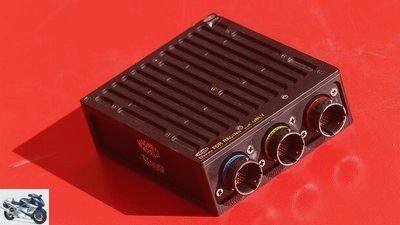
2snap
Motor control: It’s about the interaction between mechanics and electronics
MOTORCYCLE: Next year the weight of the machines will be reduced from 158 to 157 kg. What does this mean for the reliability of the motorcycles, considering the fact that Andrea Dovizioso in Mugello had a particularly light chain wheel and a seat suspension broke in Assen?
Gigi Dall’Igna: Reliability is one of the top development goals, but we must not buy it with additional weight. Therefore, we need to refine the manufacturing methods and the predictions about the service life of certain components so that these components are more reliable and at the same time weigh less. The Desmosedici has the permissible minimum weight and will continue to have it in the future.
MOTORCYCLE: You have completely turned the motorcycle inside out, but have remained true to desmodromics. What do you love about it??
Gigi Dall’Igna: Desmodromic is a very efficient control system, with the advantages of pneumatic valve control, but more efficiency at low speeds. If it is well coordinated, desmodromics brings an advantage. Getting such a system to work is not easy, however. If Ducati didn’t have so much experience with it, it would hardly occur to you to venture into such a development.
MOTORCYCLE: At Honda, there was talk of too much and too aggressive performance in 2015. Thanks to its pulling power, the Ducati has remained user-friendly, even if it has 10 or 20 hp more than the competition at its peak?
Gigi Dall’Igna: In any case, none of the riders who have come to Ducati from other brands in the past year or two have complained. The Ducati engine is undoubtedly behaving very well, both in terms of top performance and drivability. In addition to the engine itself, it is particularly important to get the electronics right. It stands by the engine, so to speak. With these modern motorcycles, it is always difficult to judge the engine itself; rather, it is always about the interaction between the engine and the associated, complex control system.
MOTORRAD: For 2016 you have set yourself the goal of fighting for the title. Is this realistic?
Gigi Dall’Igna: In the first year it is difficult to be successful. But above all, it is difficult to celebrate this success everywhere. The situations you will encounter across the spectrum of all the circuits in the World Championship are very diverse and it is difficult to always find the best set-up in all circumstances. This year we did very well in some races and not so well in others. The goal for the next season is to be good in all races. And if someone does well in all races, they are close to having a say in the fight for the title.
Related articles
-
Casey Stoner’s MotoGP Ducati for sale
Speer Limbacher motorcycle 6th pictures Speer Limbacher motorcycle 1/6 The MotoGP factory machines from 2008 had 799 cubic capacity distributed over four…
-
2snap 24 pictures 2snap 1/24 MotoGP 2016 in Mugello: Jorge Lorenzo. 2snap 2/24 MotoGP 2016 in Mugello: Jorge Lorenzo. 2snap 3/24 MotoGP 2016 in Mugello:…
-
MotoGP 2016 in Assen Race report and pictures
2snap 24 pictures 2snap 1/24 MotoGP 2016 in Assen (Netherlands): Marc Márquez. 2snap 2/24 MotoGP 2016 in Assen (Netherlands): Maverick Viñales. 2snap…
-
MotoGP at the Sachsenring 2016
2snap 30th pictures 2snap 1/30 MotoGP 2016 at the Sachsenring. 2snap 2/30 MotoGP 2016 at the Sachsenring. 2snap 3/30 MotoGP 2016 at the Sachsenring….
-
Rossi’s VR46 team: into MotoGP with Ducati
MotoGP Sports & scene Motorsport Rossi’s VR46 team: into MotoGP with Ducati Rossi’s VR46 team Three-year deal with Ducati for MotoGP It was speculated…
-
MotoGP 2021: Rossi thinks about the end of his career, Miller about Ducati
2snap. Sports & scene Motorsport MotoGP 2021: Rossi thinks about the end of his career, Miller about Ducati MotoGP starting field for 2021 Rossi thinks…
-
Ducati MotoGP: Jack Miller extends until 2022
Ducati Sports & scene Motorsport Ducati MotoGP: Jack Miller extends until 2022 Ducati in MotoGP Jack Miller extends until 2022 Jack Miller extends his…
-
Gresini in MotoGP: move from Aprilia to Ducati
Gresini Racing Sports & scene Motorsport Gresini in MotoGP: move from Aprilia to Ducati Gresini in MotoGP Switch from Aprilia to Ducati The Italian…
-
MotoGP Pramac Ducati: 2021 with Zarco and Martin
Pramac Racing 8th pictures Pramac Racing 1/8 The Ducati satellite team is completely repositioned for the 2021 season. Pramac Racing 2/8 After Jack…
-
MotoGP in Jerez Spain 2016 Race report and pictures
2snap 27 pictures 2snap 1/27 Grid Girls from the race weekend in Jerez 2016. 2snap 2/27 Pictures from MotoGP race in Jerez, Spain 2016. 2snap 3/27…